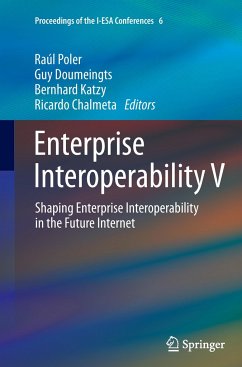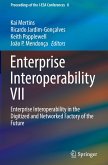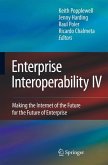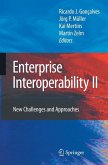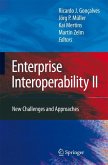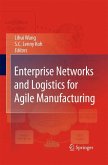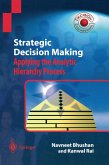Within a scenario of globalised markets, where the capacity to efficiently cooperate with other firms starts to become essential in order to remain in the market in an economically, socially and environmentally cost-effective manner, it can be seen how the most innovative enterprises are beginning to redesign their business model to become interoperable. This goal of interoperability is essential, not only from the perspective of the individual enterprise but also in the new business structures that are now emerging, such as supply chains, virtual enterprises, interconnected organisations or extended enterprises, as well as in mergers and acquisitions.
Composed of over 40 papers, Enterprise Interoperability V ranges from academic research through case studies to industrial and administrative experience of interoperability. The international nature of the authorship contnues to broaden. Many of the papers have examples and illustrations calculated to deepen understanding and generate new ideas.
The I-ESA'12 Conference from which this book is drawn was organized by Polytechnic University of Valencia, on behalf INTERVAL, and the European Virtual Laboratory for Enterprise Interoperability (INTEROP-VLab) and sponsored by the International Federation for Information Processing (IFIP) and the International Federation of Automatic Control (IFAC).
A concise reference to the state of the art in systems interoperability, Enterprise Interoperability V will be of great value to engineers and computer scientists working in manufacturing and other process industries and to software engineers and electronic and manufacturing engineers working in the academic environment.
Composed of over 40 papers, Enterprise Interoperability V ranges from academic research through case studies to industrial and administrative experience of interoperability. The international nature of the authorship contnues to broaden. Many of the papers have examples and illustrations calculated to deepen understanding and generate new ideas.
The I-ESA'12 Conference from which this book is drawn was organized by Polytechnic University of Valencia, on behalf INTERVAL, and the European Virtual Laboratory for Enterprise Interoperability (INTEROP-VLab) and sponsored by the International Federation for Information Processing (IFIP) and the International Federation of Automatic Control (IFAC).
A concise reference to the state of the art in systems interoperability, Enterprise Interoperability V will be of great value to engineers and computer scientists working in manufacturing and other process industries and to software engineers and electronic and manufacturing engineers working in the academic environment.

